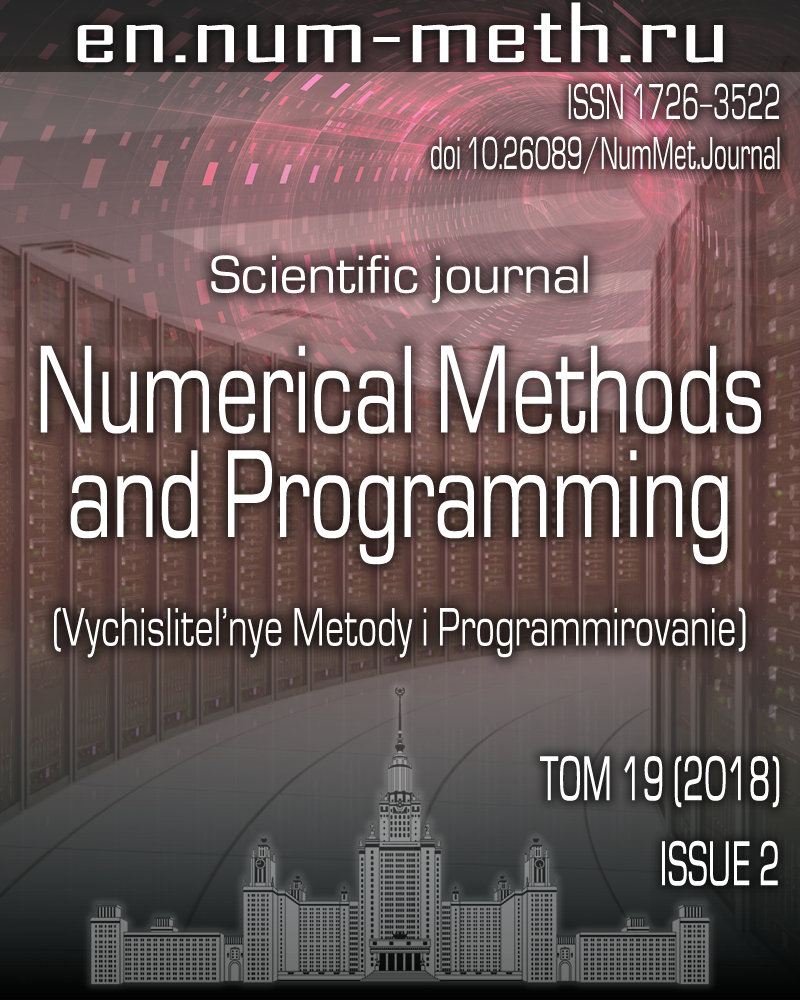DOI: https://doi.org/10.26089/NumMet.v19r217
A higher-order difference scheme of the Cabaret class for solving the transport equation
Keywords:
Cabaret scheme
transport equation
higher order approximation
accuracy
Abstract
A new difference scheme of the Cabaret class with a higher order of accuracy for solving the scalar transport equation is proposed. The order of approximation of this difference scheme is equal to four. The balance-characteristic representation of the scheme is constructed and the dispersion properties are given. For the proposed difference scheme, a number of examples to solve the transport equation for smooth and discontinuous profiles are considered in comparison with the classical Cabaret scheme.
Published
2018-05-08
Issue
Section
Section 1. Numerical methods and applications
References
- V. M. Goloviznin and A. A. Samarskii, “Finite Difference Approximation of Convective Transport Equation with Space Splitting Time Derivative,” Mat. Model. 10 (1), 86-100 (1998).
- V. M. Goloviznin and A. A. Samarskii, “Some Characteristics of Finite Difference Scheme ’Cabaret’,” Mat. Model. 10 (1), 101-116 (1998).
- A. Iserles, “Generalized Leapfrog Methods,” IMA J. Numer. Anal. 6 (4), 381-392 (1986).
- V. M. Goloviznin, S. A. Karabasov, and I. M. Kobrinskii, “Balance-Characteristic Schemes with Separated Conservative and Flux Variables,” Mat. Model. 15 (9), 29-48 (2003).
- V. M. Goloviznin, M. A. Zaitsev, S. A. Karabasov, and I. A. Korotkin, New CFD Algorithms for Multiprocessor Computer Systems (Mosk. Gos. Univ., Moscow, 2013) [in Russian].
- O. A. Kovyrkina and V. V. Ostapenko, “On Monotonicity of Two-Layer in Time Cabaret Scheme,” Mat. Model. 24 (9), 97-112 (2012) [Math. Models Comput. Simul. 5 (2), 180-189 (2013)].


